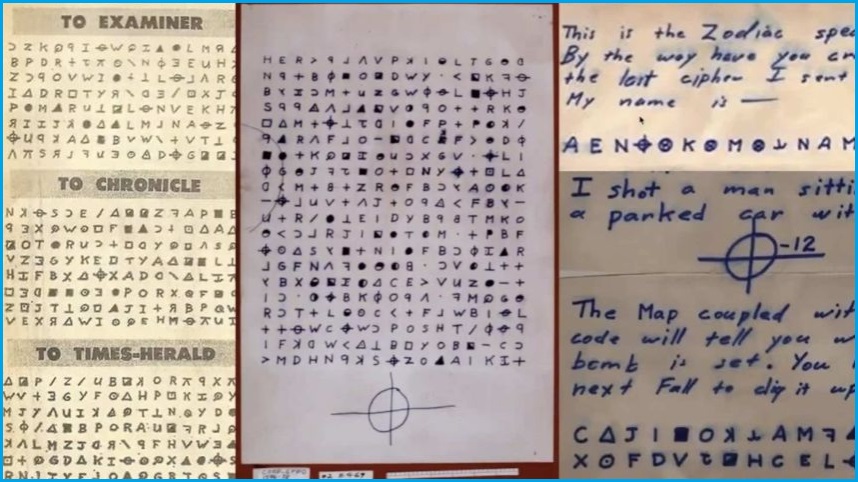A Melbourne mathematician has helped to crack one of the Zodiac Killer’s infamous codes which has been unsolved for more than 50 years, using big data techniques.
Samuel Blake, a visiting fellow at the University of Melbourne and an applied mathematician, had his solution to one of the Zodiac Killer’s ciphers certified by the Federal Bureau of Investigation (FBI) this week.
Blake worked on the solution with two fellow cryptologists: David Oranchak and Jarl van Eycke.
The Zodiac Killer terrorised Northern California in the late 1960s and early 1970s, and has been credited with at least five unsolved murders.
The serial killer sent letters containing riddles and ciphers to local police and newspapers, along with evidence he was behind the murders.
While one of the ciphers was solved within days, three have remained unsolved in the five decades since they were created.
The 340 cipher was sent to the San Francisco Chronicle newspaper in 1969, and was solved by Blake and his fellow cryptologists at the end of 2020.
Blake used big data algorithms to solve the cipher, which reads in part: “I hope you are having lots of fun in trying to catch me...I am not afraid of the gas chamber, because it will send me to paradice [sic] all the sooner.”
He told the ABC he became interested in the Zodiac Killer after watching a film US director David Finch made on the serial killer in 2007.
But it was boredom due to the COVID-19 pandemic and long lockdowns in Melbourne that led Blake to solve the infamous cipher.
“To help with COVID boredom I started working on it in earnest, where we looked at all these different possible ways that you could read through the cipher before you tried to actually solve it,” Blake told ABC News.
Blake said he picked up on a symmetry in the arrangement of the cipher, and began working virtually with Oranchak, who is based in the US. Blake was remotely accessing the University of Melbourne’s supercomputer, named Spartan, from his home in Melbourne.
The pair tried about 650,000 different ways of reading the cipher with no luck before re-running between 10,000 to 50,000 of these through the algorithmic process.
One of these results turned up some phrases including “I hope you are having”, “try to catch me” and “gas chamber”.
This helped the cryptologists to realise that the Zodiac Killer had made an error in the cipher, potentially explaining why it has gone unsolved for so long.
“In general, you put a symbol on the cipher then you move one line down and two columns across and put the next symbol,and you repeat that throughout the entire cipher,” Blake said. “But once [the Zodiac] made a mistake and had only gone one line down and one column across, instead of two, it completely broke the symmetry, and we had to discover that.”
After this revelation, the pair brought in van Eycke, a software programmer who created a cryptology program to assist with the decryption.
“My contribution primarily was recognising those symmetries in the cipher, and then applying a big data approach of ‘let’s just try to enumerate all these possible directions’. We’ll be wrong millions of times - potentially - but we might just get lucky and be right one,” Blake said.
Blake and co sent the solution to the cipher to the FBI earlier this month, with the agency eventually confirming it was legitimate.
“The FBI is aware that a cipher attributed to the Zodiac Killer was recently solved by private citizens,” the FBI said in a statement.
“Due to the ongoing nature of the investigation, and out of respect for the victims and their families, we will not be providing further comment at this time.”
The solved cipher did not provide any clues as to the identity of Zodiac, with two of their ciphers still remaining a mystery.
These ciphers are much shorter, making them significantly more difficult to solve, but Blake said he hopes his discovery assists in decrypting these puzzles and unmasking the killer.
“What we are hoping, as a follow on to this, is that we can use a hybrid of the solution from the first cipher and our solution we have come up with to solve his next two ciphers,” he said.
“That’s what me and David are looking at, at the moment, once we’ve had a chance to digest what is going.”










